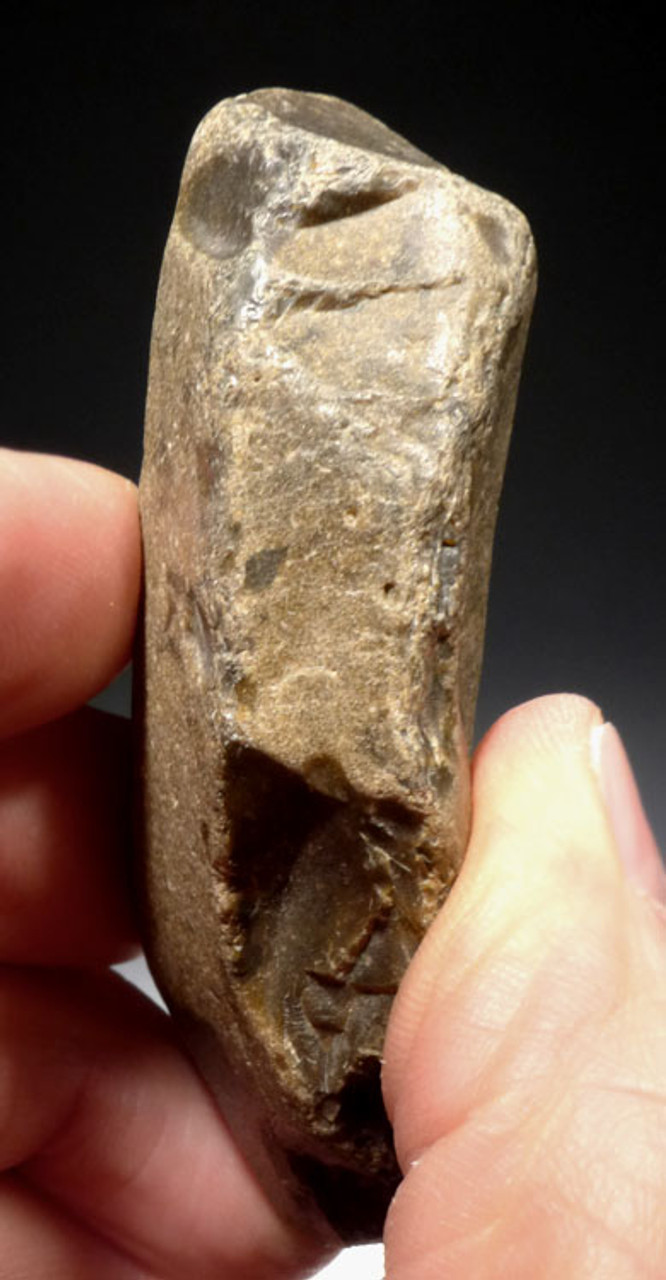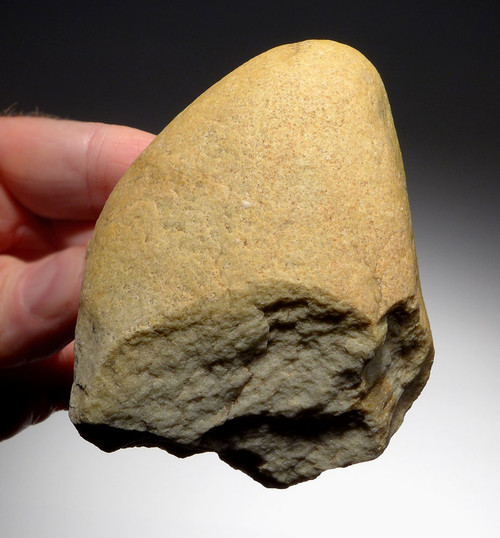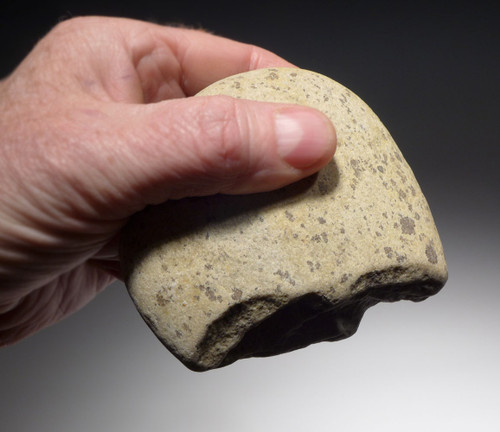Product Description
This is a SUPER RARE tool dating to the Clactonian Period of Northern Europe (Netherlands). It is a BIFACIALLY STRUCK CHOPPING TOOL. It was retrieved in the 1980's with other tools of the same period, during a park construction along the banks of the Maas River in Kerkdriel, Netherlands. We were fortunate to acquire a few of these rare specimens. THIS IS THE ONLY CHOPPING TOOL WE SAW IN THE COLLECTION!!! The rarity of such a specimen cannot be overemphasized. We have never seen such pieces before and the means by which they were found, many meters below the surface of the ground by dredge, will never recur again. All examples were black flint with worn surfaces and deeply impacted mineral deposits. Many fossils were also collected at the same level as these Clactonian tools including Rhino, Mammoth, Bison, etc.. Once the few pieces we have are sold, we will never get anything like these again. The remainder of the entire collection now resides in a Dutch museum.
This amazing specimen is complete as made with deep patina and mineral deposits in micro-crevices, and without any modern damage. Original cortex makes up much of the proximal side of the chopper for an ingenious and ergonomic hand grip. INCREDIBLE multiple strikes on the chopping edge. The ONLY Clactonian CHOPPER we have ever handled and only one we will ever have to offer for sale. A ONCE-IN-A-LIFETIME opportunity.
HISTORY
The Clactonian is the name given by archaeologists to an industry of European flint tool manufacture that dates to the early part of the interglacial period known as the Hoxnian, the Mindel-Riss or the Holstein stages (c. 400,000 years ago). Clactonian tools were made by Homo erectus rather than modern humans. The term is sometimes applied to early, crude flint tools from other regions that were made using similar methods.
It is named after 400,000-year-old finds made by Hazzledine Warren in a palaeochannel at Clacton-on-Sea in the English county of Essex in 1911. The artifacts found there included flint chopping tools, flint flakes and the tip of a worked wooden shaft along with the remains of a giant elephant and hippopotamus. Further examples of the tools have been found at sites including Barnfield Pit and Rickson's Pit[1] near Swanscombe in Kent and Barnham in Suffolk; similar industries have been identified across Northern Europe. The Clactonian industry involved striking thick, irregular flakes from a core of flint, which was then employed as a chopper. The flakes would have been used as crude knives or scrapers. Unlike the Oldowan tools from which Clactonian ones derived, some were notched implying that they were attached to a handle or shaft. Retouch is uncommon and the prominent bulb of percussion on the flakes indicates use of a hammerstone.
The Clactonian industry may have co-existed with the Acheulean industry, which used identical basic techniques but which also had handaxe technology. In the 1990s it was argued that the difference between Clactonian and Acheulean may be a false distinction. The Clactonian industry may in fact be the same thing as the Acheulean and only identified as being different due to its tools being Acheulean but made by individuals who had no need for handaxes.
Whether or not they are separate industries it would seem that the 'Clactonian' and 'Acheulean' stone tool makers would have had cultural contact with each other.
 US DOLLAR
US DOLLAR
 EURO
EURO
 AUSTRALIAN DOLLAR
AUSTRALIAN DOLLAR
 CANADIAN DOLLAR
CANADIAN DOLLAR
 POUND STERLING
POUND STERLING


























